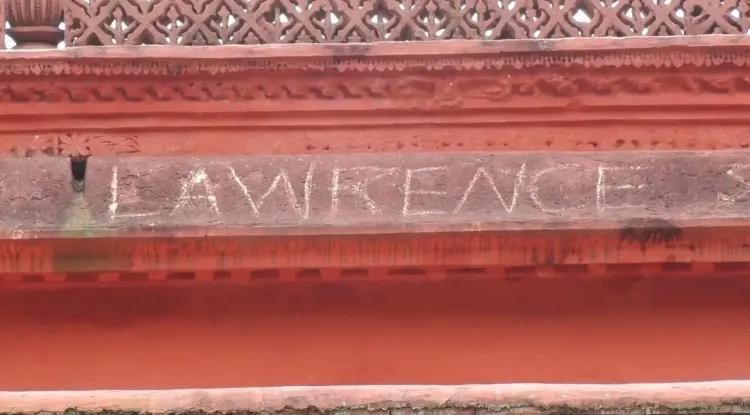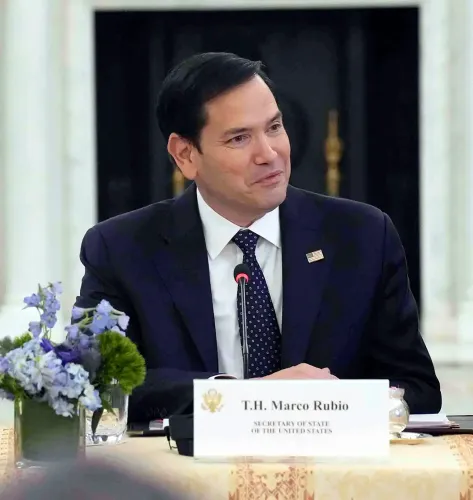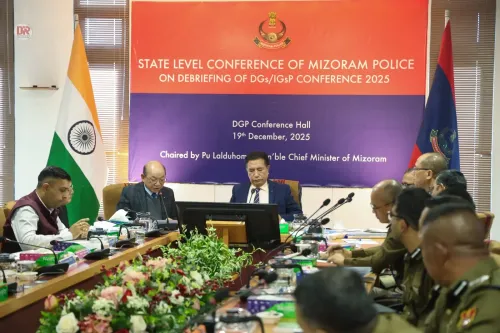How Did Gangster Lawrence Bishnoi's Name End Up on Tipu Sultan's Summer Palace Wall?

Synopsis
Key Takeaways
- Lawrence Bishnoi's name has been vandalized on a historic site.
- Tipu Sultan's summer palace is located on Nandi Hills near Bengaluru.
- Calls for action against the vandalism are growing among locals and tourists.
- The palace is a significant historical site that needs protection.
- Authorities must enhance security to prevent future incidents.
Bengaluru, Oct 27 (NationPress) The shocking incident of miscreants carving the name of gangster Lawrence Bishnoi onto the wall of Tipu Sultan’s summer palace, once the residence of the former ruler of the Mysuru kingdom, surfaced on Monday. This historic palace is situated atop Nandi Hills on the outskirts of Bengaluru.
It appears that the culprits used a stone or similar hard object to inscribe the gangster’s name.
The palace is under the jurisdiction of the Department of Archaeology. The name 'Lawrence Bishnoi' has been prominently etched on the front side of the summer palace.
This vandalism occurred despite the presence of multiple CCTV cameras on site. Tourists and locals have expressed strong disapproval of this act. The summer palace, located on the northern side of Nandi Hills, was historically used by Tipu Sultan as a retreat during the summer.
Visitor Mohammad Abdulla stated, “We came to explore Nandi Hills and see Tipu Sultan’s summer palace, but were astonished to find the name of a gangster like Lawrence Bishnoi here. Visitors may confuse this site, as there is no clear signage indicating that this is Tipu Sultan’s summer palace — only a board at the main entry.”
He urged, “This must be rectified, and those responsible should face consequences. Authorities should also limit access to the terrace.”
Another tourist, Mahantesh, remarked, “Such actions are unacceptable at tourist locations. The Archaeology Department must take appropriate measures to protect this monument and impose strict penalties on those involved.”
Lawrence Bishnoi, hailing from Punjab, leads the so-called “Bishnoi gang,” a transnational organized crime syndicate linked to various crimes including murder, extortion, weapons, and drug trafficking. He is alleged to manage his operations from prison, with associates spread throughout India and abroad, including Canada.
Canada designated the Bishnoi gang as a terrorist entity in September 2025, citing its involvement in high-profile assassinations and intimidation of diaspora communities. In northern India, the gang is also linked to plots involving planned terror attacks in Delhi and Gwalior ahead of August 15.
Tipu Sultan (1751–1799), recognized as the 'Tiger of Mysore,' governed the Kingdom of Mysore in South India and is a significant figure in 18th-century Indian history.
Following Hyder Ali’s death in 1782, Tipu Sultan ascended to the throne. He was renowned for his administrative reforms, military innovations, and resistance against British colonial expansion.










